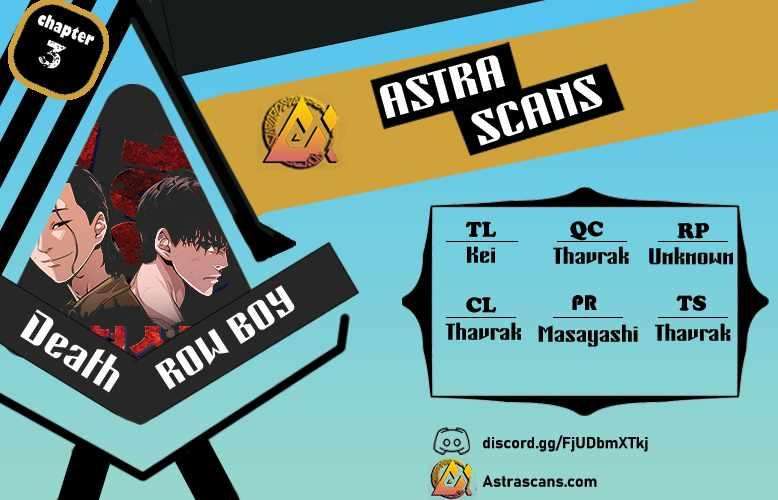
Step into the chilling world of “Death Row Boy” Chapter 3, where secrets lurk in the shadows and the web of deceit tightens. In this article, we will unravel the thrilling twists and turns that unfold within the gripping narrative of Chapter 3. Get ready for a rollercoaster of emotions as we delve deeper into the lives of the individuals, uncovering secrets and facing the fallout from their decisions. Join us as we navigate the treacherous terrain of “Death Row Boy” Chapter 3 and unravel its captivating mysteries.
A Sinister Revelation Unveiled
Chapter 3 of “Death Row Boy” marks a significant turning point in the story, as a sinister revelation comes to light. The chapter opens with an air of suspense, hinting at the darkness that lies beneath the surface. As the pages turn, readers are plunged into a world of intrigue and suspense, where nothing is as it seems.
The chapter begins with Kazuki Aoki, our protagonist, caught in a whirlwind of confusion and paranoia. He feels that something is wrong inside the prison, but he is unable to identify what it is. However, as the plot unfolds, a shocking revelation sends shockwaves through both Kazuki and the readers.
The author skillfully builds suspense, using foreshadowing, subtle clues, and clever misdirection to keep readers guessing. Each page turn is fraught with tension, as the truth inches closer to the surface. The moment of revelation is a masterstroke of storytelling, leaving readers gasping in disbelief and eagerly flipping to the next page.
This revelation not only shatters Kazuki’s perception of the prison but also deepens the mystery surrounding his own conviction. It raises questions about the extent of corruption within the justice system and the true motives behind his incarceration. Readers are left with a sense of urgency to uncover the truth alongside Kazuki, propelling the narrative forward with a renewed sense of intrigue.
Confronting Personal Demons
Chapter 3 of “Death Row Boy” delves deep into the complex psyche of the characters, forcing them to confront their personal demons. As the story progresses, we witness the inner turmoil and moral dilemmas faced by Kazuki Aoki and his fellow inmates. Their pasts come crashing into the present, threatening to shatter their fragile hopes and dreams.
In this chapter, Kazuki finds himself grappling with his own guilt and haunted by the consequences of his actions. The weight of his past mistakes bears heavily on his conscience, making him question his own worthiness of redemption. The exploration of Kazuki’s internal struggles adds a layer of emotional depth to his character, making him relatable and human.
Furthermore, Chapter 3 introduces us to other inmates who are also grappling with their own personal demons. Their stories intertwine with Kazuki’s, creating a complex tapestry of conflicting emotions and motivations. As their paths converge, the chapter delves into themes of remorse, self-forgiveness, and the search for redemption.
Through introspective moments and poignant dialogue, readers are given glimpses into the characters’ inner worlds. We witness their vulnerabilities, their fears, and their desperate longing for a chance at redemption. The exploration of their personal demons adds an emotional weight to the story, evoking empathy from the readers and further immersing them in the narrative.
Unmasking Betrayal and Loyalty
Chapter 3 of “Death Row Boy” delves into the intricate web of loyalty and betrayal that weaves through the prison walls. The chapter introduces new characters and exposes the intricate relationships that exist within this unforgiving environment. The lines between friend and foe blur, and the characters must navigate a treacherous landscape of alliances and betrayals.
In Chapter 3, the author skillfully crafts a web of intrigue, where trust is a fragile commodity. New characters are introduced, each with their own motives and hidden agendas. As the story unfolds, readers are left questioning the true intentions of those surrounding Kazuki and the other inmates.
The chapter delves into the complexities of loyalty, forcing characters to confront their allegiances and make difficult choices. The author expertly plays with readers’ expectations, subverting stereotypes and delivering surprising twists that keep the narrative fresh and unpredictable.
Through intense dialogue and carefully crafted character interactions, the author explores the themes of trust, deception, and the consequences of misplaced loyalty. Readers are kept on the edge of their seats, eagerly anticipating the next revelation and the shifting dynamics among the characters.
The unmasking of betrayal brings about a sense of danger and heightened tension. It adds layers of complexity to the narrative, exposing the intricate power dynamics at play within the prison. As the true colors of certain characters are revealed, readers are left questioning who can be trusted and who is merely a pawn in a larger game.
The Artistry of Suspense
In Chapter 3 of “Death Row Boy”, the artistry of suspense is on full display. The skilled use of visuals enhances the suspense and heightens the emotional impact of the story. The artist’s meticulous attention to detail creates a visual language that amplifies the tension and intrigue of the narrative.
From the carefully constructed panel layouts to the dynamic angles and perspectives, every visual element serves a purpose in building suspense. The artist expertly captures the characters’ expressions, conveying their emotions and inner turmoil with precision. The use of shadows, lighting, and atmospheric effects adds a sense of foreboding and unease, enveloping the readers in the prison’s eerie ambiance.
Additionally, the artist’s mastery of pacing and composition contributes to the overall suspenseful atmosphere. Well-timed reveals and strategic use of panel transitions create a rhythm that keeps readers engaged and invested in the story. The artistic choices made in Chapter 3 effectively draw readers deeper into the world of “Death Row Boy,” heightening the impact of each twist and revelation.
Themes of Redemption and Sacrifice
Death Row Boy’s third chapter dives deeply into the ideas of atonement and sacrifice. The issue of whether forgiveness is possible looms large as the protagonists struggle with their pasts and come face to face with their most sinister secrets. The chapter examines the importance of forgiving others, the sacrifices people are prepared to make in order to have a second chance at happiness, and the power of forgiveness.
The author offers several avenues for atonement throughout the chapter, each with its own challenges and repercussions. The choices that the characters must make strain their fortitude and put their convictions to the test. The hardships they experience on their journeys to redemption are external and internal, respectively.
The exploration of sacrifice adds depth to the characters’ motivations and actions. The chapter showcases the lengths to which individuals are willing to go to protect their loved ones or to seek justice. It examines the moral dilemmas that arise when personal sacrifices clash with larger societal expectations.
The author’s nuanced approach to these themes allows readers to reflect on their own beliefs about redemption and sacrifice. The characters’ journeys serve as a catalyst for introspection, inviting readers to question the boundaries of forgiveness and the transformative power of personal growth.
In the gripping pages of “Death Row Boy” Chapter 3, the narrative takes a thrilling turn, unveiling hidden secrets, testing loyalties, and delving into the depths of the characters’ souls. This chapter weaves a tapestry of suspense, emotion, and moral complexity that leaves readers yearning for more.
As the story unfolds, the exploration of redemption, sacrifice, and the consequences of one’s actions resonates deeply. The intricate storytelling, masterful artwork, and thought-provoking themes make “Death Row Boy” Chapter 3 a captivating read that immerses readers in a world of darkness and intrigue.
The chapter’s sinister revelation sets the stage for a gripping narrative, keeping readers on the edge of their seats. The exploration of personal demons adds emotional depth to the characters, allowing readers to connect with their struggles and empathize with their journeys. The unmasking of betrayal introduces an element of danger and unpredictability, heightening the tension and keeping readers guessing.
The artistic prowess displayed in Chapter 3 elevates the reading experience to new heights. The visuals amplify the suspense, with meticulous attention to detail, well-crafted panel layouts, and skillful use of lighting and shadows. The artwork enhances the emotional impact of the story, drawing readers further into the world of “Death Row Boy” and immersing them in its atmospheric setting.
The chapter is replete with themes of atonement and sacrifice, which encourage thought and reflection. As the characters face their pasts and make decisions with lasting effects, their paths cross. The book compels readers to reflect on the nature of redemption, the boundaries of forgiveness, and the price one is prepared to pay for justice and personal development.
As “Death Row Boy” Chapter 3 draws to a close, readers are left with a mix of satisfaction and anticipation. The narrative threads are skillfully woven together, yet new mysteries emerge, leaving the door open for further exploration. The chapter leaves readers hungry for the next installment, eager to continue the journey alongside the captivating characters.
In conclusion, “Death Row Boy” Chapter 3 takes readers on a gripping and emotionally charged ride. The sinister revelation, exploration of personal demons, unmasking of betrayal, and the thematic depth of redemption and sacrifice all contribute to a compelling reading experience. With its masterful storytelling and evocative artwork, Chapter 3 solidifies “Death Row Boy” as a must-read manga series. Prepare to be enthralled as the story unravels, and the characters’ fates hang in the balance.
By: John Fernandes



